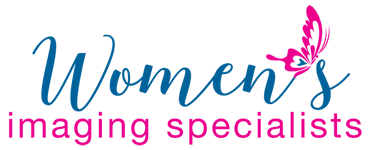Recently, the American Cancer Society (ACS) announced its new screening guidelines that increase the age for annual mammograms for women of average risk from 40 to 45 years of age and biennial screening for all women between the ages of 55 to 74. ACS also stated that doctors should no longer perform clinical breast exams.
Retrospective analysis of numerous research studies led to this conclusion, HOWEVER the conclusion essentially ignores the basic fact and single most important message: MAMMOGRAMS SAVE LIVES. Period. End of story. The importance of receiving annual mammograms, beginning at age 40 — and possibly earlier for women with a history of breast cancer — is obvious. 1 in 8 (12%) women in the US will develop invasive breast cancer during their lifetime. Screening mammography is our best tool in the early detection of breast cancer. Catching cancer at its earliest stages leads to higher cure rates and decreased deaths. No one is disputing these simple facts.
U.S. breast cancer deaths have fallen 34 percent in the past 20 years — from 33 to 22 per 100,000 women between 1990 and 2011. And that represents 200,000 lives saved! At present, there are no tests to replace mammography. It is a crucial and life-saving tool in the fight against breast cancer.
The trouble with these new recommendations is that many women do not know if they are at “average” risk because they are not informed about their family history. This creates a false sense of security and puts many at risk by telling women they have an additional 5 years to be screened.
The longer women take to be diagnosed with breast cancer the more costly and painful the treatments and options. We should be encouraging detection, not discouraging it especially when the incidents of breast cancer are still at alarming numbers. With the high costs of health care, these new directives by the American Cancer Society will be viewed as an attempt to cut costs under the guise of best practices and its effect may put more lives at risk.
One major “harm” cited was the anxiety that could accompany a false-positive mammogram. The panel members reasoned that reducing anxiety by reducing screening was reasonable, which would allow women to die unnecessarily. To suggest that “anxiety” or “potential harm from false positives readings” is reason enough to change the screening guidelines is a misrepresentation. Today’s 3D tomosynthesis technology is reducing call backs and directly reducing false positives and unnecessary procedures. At Women’s Imaging Specialists (WIS), our call back rates have dropped over 20% using 3D mammography. Instead of changing the guidelines, we should be aggressively promoting utilization of the latest technology in breast cancer screening for women starting at age 40.
All medical care is based on “overtreatment” since we are still unable to accurately predict who will benefit with certainty from any medical intervention. Regardless, screening leads to early detection, which saves lives. Screening is not responsible for “overdiagnosis.” Women should not be deprived of life-saving screening because of the cost or that the tool is not perfect in detection.
In conclusion, we need to stop the confusion. Of note, the ACS guidelines say that health insurers should cover all mammograms, regardless of the age of the patient or the frequency of the screening. The American College of Radiology (ACR) and WIS recommend screening mammography should begin at age 40. The evidence supports early detection. Screening mammography starting at age 40 is our best tool in the fight against breast cancer. It works!

